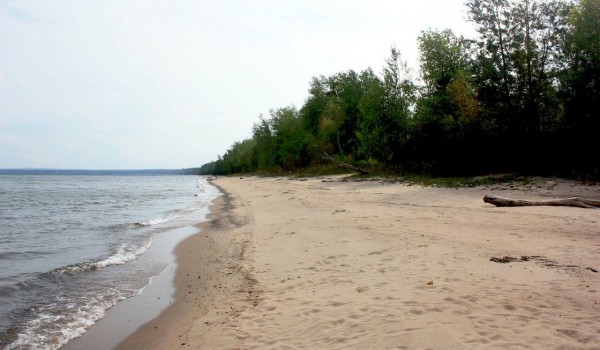
PROLOGUE
Sitting in an empty cabin on the shores of Lake Superior, I find myself wishing I had packed a jacket. Just the end of September, the crisp air gives the feel of mid-October. It is not long, however, before Joe Rose’s voice begins to warm the room with stories of his childhood on the Bad River Reservation. A soft laugh interrupts his slow, deep voice as he remembers Peppy, his fat, yellow cat that acted more like a human than a pet.
But Rose’s voice grows suddenly louder, angrier, as he tells me he fears the traditions of the Bad River Band have now fallen to the wayside for many on the reservation. With a proposed mine in the nearby Penokee Hills, Rose sees the voice of his people slowly being silenced as outside corporations try, he says, to exploit their land. But some are making sure their voice is not silenced. With a new documentary, three Native American teenagers help to celebrate the Indian tradition of storytelling while giving a voice to an often-ignored people.
ABOUT THE AUTHORS
I came to the Bad River Reservation to better understand the controversy provoked by the proposed mine in the Penokee Hills. It’s the same controversy that has a Florida mining company looking for iron ore in northern Wisconsin, state legislators calling for jobs and bands of the Lake Superior Tribe of Chippewa pleading to save their land and their culture. But it is not mining executives or legislators or tribal leaders that I speak with. It is three teenagers.
Meeting Shania, Jordan and Ahpahnae during my day at Bad River, at first I have a hard time envisioning the trio working together. They admit to not being close friends. Their personalities are about as opposite as you could imagine.
Shania is a serious, sweet 14-year-old. The most reserved of the three, she nervously plays with her shoe throughout our talk. I cannot help but notice the interesting juxtaposition of her soft voice and shy demeanor with her pink and glittery gold Jack Sparrow T-shirt.
Jordan is also 14, but is loud, enthusiastic and about as goofy as you can get. An avid Chicago Blackhawks hockey fan, he shares with me his love of science and his dreams of becoming a biochemist. Already looking forward to high school chemistry two years down the road, he jokingly warns his mother, who is sitting nearby, “If something blows up, Mom, you’re going to get a call.”
Falling on the middle of the spectrum is 15-year-old Ahpahnae. Confident, composed and a trumpet whiz, he’s the first Native teen to be selected as a Wisconsin Music Ambassador. Ahpahnae will be on a 10-city concert tour of Europe next summer.
To outsiders, the teens’ only similarities might appear to be their age and strong ties to the Bad River Band of the Lake Superior Tribe of Chippewa. But what brings these teenagers together is their incredible passion to protect their land, their people and their culture.
SETTING
The Bad River Reservation stretches across northern Wisconsin’s Ashland and Iron counties, reaching to the southern beaches of Lake Superior. The area is known for its beautiful landscapes, wide varieties of animal species and, most important to the people of the Bad River tribe, wild rice.
Harvested from the sloughs of the Bad River, wild rice, or manoomin, is the cultural center for the Ojibwe, another name for the Chippewa tribe. The story of manoomin goes back to when the Ojibwe first settled on the land, told by the spirits to make their home where they found the “food that grows on the water.” Ever since, the people of Bad River have taken great pride in the harvest of their most precious crop.
Just south of the reservation is the home to another natural resource: the Penokee Hills. There, one can find dozens of ecosystems and the headwaters of the Bad River. The hills are also home to large iron ore deposits, which have attracted the attention of a Florida-based mining corporation, Gogebic Taconite (GTAC). Working with Wisconsin legislators, GTAC has proposed opening a 22-mile-wide, open-pit iron mine. GTAC contends the mine will help bring hundreds of jobs to an otherwise economically destitute area.
But tribal members fear that what the mine will bring is environmental destruction. The hills where the mine would be are about 1,000 feet higher than the surrounding area. Any pollution from a mine would flow down the Bad River and into Lake Superior, most likely destroying the wild rice sloughs in the process. For the people of Bad River, the benefits of protecting their resources far outweigh the job growth, however desirable, that mining would bring to the area.
“We may be poor in a Western economic sense, but I think we are rich in a lot of ways,” Dr. Patty Loew, a Bad River tribal member and a professor in the UW-Madison Department of Life Sciences Communication, says. “We have rich culture, we have a rich history and we have amazing natural resources.”
Though the Ojibwe people feel they are fighting for their livelihood, their voices often go unheard because of a lack of scientific representation in the Indian community. Because of this, bills backing the mine are passing through the Wisconsin legislature with relative ease.
PLOT
Loew could not just sit back and watch. She also happens to be the director of Tribal Youth Media. For the past few years, Loew has gone to the Bad River Reservation and taught Native youth how to use digital media and create short documentaries. Loew was drawn to teaching digital media because the spatial thinking needed to create such projects is consistent with Native culture.
“One of the things that I really want to do is help grow this next generation of land stewards, and I want to do it using the traditional ways we communicate,” Loew says. “We have this amazing storytelling tradition in Indian Country. This is the way we communicate. We’re an oral culture.”
In the past, Loew would go to Bad River in the summer to teach a workshop to groups of youth who would make their own short documentaries. But, because of the timeliness of the proposed mine combined with the fear of her people, Loew knew she had to do something different this year.
A grant from the First People’s Fund, a foundation in South Dakota that funds Native artists, gave Loew enough money to buy a video camera for the tribe and to pay three teens to work on the film. Looking back on past participants of her workshops, three names immediately came to mind: Shania for writing, Jordan for filming and Ahpahnae for music composition.
Having worked with Loew in the past and because of their strong connection to the subject matter, the three were eager to work on the project. Ahpahnae says working on the documentary seemed like a good opportunity not only to better educate himself on the subject, but also to better educate others. “I wanted to get more information about [the mining] so I could tell others the same information,” he says.
All three are passionately against the mine. Still, they had originally planned for the documentary to be informative rather than persuasive. According to Shania, in their previous workshops they learned the importance of presenting both sides to an argument, so as to not appear biased in their reporting. But after talking to members of their community, they decided to use the film to make an argument. “Protect Our Future” was born.
“As the kids started interviewing the cultural people and the scientists in their own community, it was clear that people were so passionate and furious and angry and felt so deeply about this issue and felt that nobody was listening to them,” Loew says. “It seemed [to them] that this was more important to have [the documentary] reflect the community because those other perspectives were out there and the community’s perspective was never shared.”
Creating the documentary was more or less a full-time job. It required the three young filmmakers to meet eight hours a day, five days a week throughout June and July of 2013. Jordan jokingly tells me he was originally excited about the project until he found out how hard it was. But the work they did was extensive, interviewing tribal elders and members and exploring the reservation. They even climbed the hills to the proposed mine site, recording equipment in tow.
After a month of reporting, writing and composing, a rough cut of the documentary was shown to members of the tribe. Throughout the entire process, the three stuck to their Native roots. Even the editing process was a collaborative one, allowing elders and those in the film to make suggestions for how they best wanted the film to represent them as a people. But, in the end, it was Shania, Jordan and Ahpahnae’s hard work, passion and vision that made the final cut. It was their film.
“It turned out what I wanted it to be, to educate the public about what’s going on,” Ahpahnae says. “I’m pretty excited for it.”
EPILOGUE
Rose explains to me the idea of the “Seventh Generation,” a key to understanding the actions of the Bad River tribe.
“We have a strong belief about looking seven generations ahead, and asking ourselves, ‘What will we be leaving to that seventh generation? Will they have clean water? Will they have fresh air? Will they enjoy pristine wilderness?’ When each generation is born, they take on that responsibility of looking seven generations ahead. That’s not just my responsibility, or my son’s responsibility, but the responsibility of my grandchildren, and the responsibility of the young people that put this documentary together,” Rose says.
Through their documentary, Shania, Jordan and Ahpahnae shed light on the environmental impacts that the proposed mine would have on their land. But it seems that getting involved in this project plays into the idea of the seventh generation in a different way as well.
Dana Jackson, Bad River’s education director and Shania’s father, expresses excitement that the youth of his tribe had the opportunity to gain these technical skills. In an ever-evolving technical world, these kids can pass on the stories of their people in a modern way. And because they are still young, they will be able to pass on that knowledge to others in the tribe as they get older.
In November, Shania, Jordan and Ahpahnae will begin showing their documentary at film festivals across the state. The most interesting showing should be at the Tales from Planet Earth festival in Madison, where they will have the chance to tell their story in the same city where legislators are determining the fate of their land. Though they all admit to being a bit nervous about showing the film to and getting critiques from strangers, they are excited knowing they are helping to educate the public.
“I see the transformation and the transformative powers it has with young people and I see how confident they get,” Loew says. “When you know something and you’re able to transmit that knowledge, it’s a very empowering kind of process.”
For a group that has felt ignored for so long, empowerment just might be the first step in finally being heard.
Take a look at Mapping the Mine for more information.







